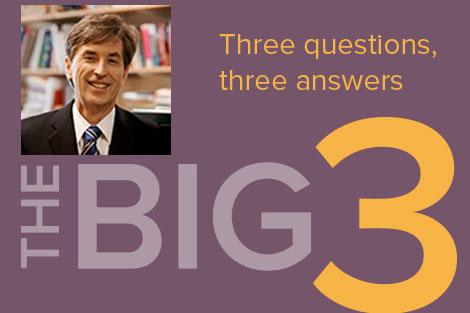October 4, 2017—In the wake of a mass shooting on October 1 in Las Vegas that left at least 59 people dead and more than 500 injured, David Hemenway, professor of health policy at Harvard T.H. Chan School of Public Health and director of the Harvard Injury Control Research Center, offered insights on the public health approach to gun control.
Are mass shootings becoming more frequent and more deadly in the U.S.?
Public mass shootings, such as what just happened in Las Vegas and in last year’s shooting at the Pulse nightclub in Florida have become more frequent. Unfortunately, it appears that these killings are somewhat contagious.
They also seem to be becoming more deadly—largely because of the weaponry at the killers’ disposal. The Las Vegas shooter had 47 guns in his hotel room—all purchased legally—including at least one that could fire at 9 rounds per second.
But while these mass shootings are horrific, from a public health perspective, the daily toll of gun homicides, accidents, and suicides is more of a concern.
How can gun violence be tackled from a public health perspective?
A lesson from public health is that it is usually more effective to change the environment than to try to change people. The U.S. should use the same harm reduction approach to gun violence that it uses to treat other public health threats, like automobile crashes or air pollution—employing a wide variety of methods to reduce the problem.
It is very easy in this country for people to get guns, even the deadliest weapons. The Harvard Injury Control Research Center found that 22% of gun owners obtained their most recent gun without a background check. And, unfortunately, background checks in the United States seem to be the weakest of any high-income country.
In Australia, after the massacre of 35 people in Port Arthur 21 years ago, Australians said, “Enough is enough.” What made a difference was that a conservative prime minister led the effort. They banned the weapons most commonly used in their mass shootings—semiautomatic and pump-action rifles—and bought back those that people already owned. And they tightened their gun laws. While they had 13 gun massacres in the two decades before the Port Author massacre, in the two decades since, they have had none. Australia has also seen dramatic drops in both firearm homicide and firearm suicide.
Our policies are used in the rest of the world as a counter-argument—an example of what not to do. If someone in Australia, for example, wants to loosen up gun control laws, opponents say, “Do you want to end up like the U.S.?” And nobody does.
You’ve spoken out against the ban on using federal funds for research into gun violence. How might more research help improve safety?
Research matters. In a country like Japan, that has very few guns and almost no gun deaths, it would not be that important. But we live in a country with lots of guns and lots of gun deaths. We should expect our guns to be with us for a very long time. We have to learn how to live with them—right now too many of us are dying from them.
There are so many things that we need to know and need to do. A couple of examples? We need to find ways to stop gun thefts—currently some 300,000 or more guns are stolen each year, a prime way they get into the criminal marketplace. We need to improve gun storage to help stop guns from getting into the wrong hands. Gun theft could also be reduced by constructing guns that won’t operate if stolen. We need to work with trainers to ensure that gun training programs are effective—not only in reducing accidents but also in leading to reductions in gun theft and gun suicide.
The extreme polarization of the gun control debate in the U.S. makes change difficult, but it doesn’t have to stay this way. In public health, there have been major struggles for every success. And there have been a lot of public health successes. You just never know what the tipping point is going to be.
Listen to a podcast interview with David Hemenway:
